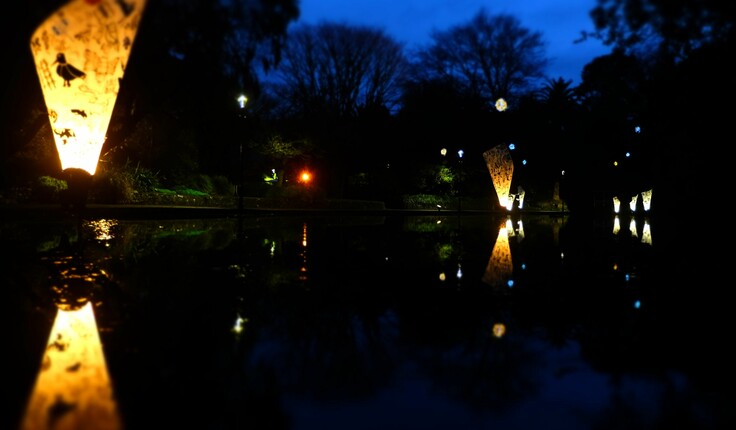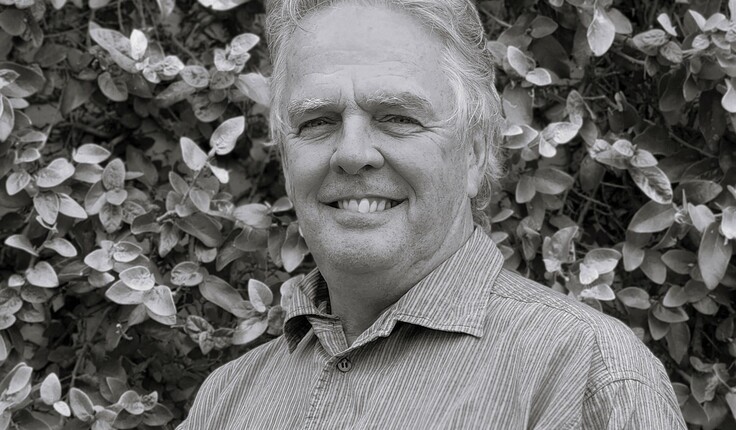News
Te Ramaroa, Matariki, and working with community
Posted 12 07 2023
in News

In Brief: A conversation with Rory Langbridge
This is the first of series of short conversations with Landscape Architects working on community projects around the country.
We had the good fortune of speaking with Rory Langbridge of RMM – Rough Milne Mitchell Landscape Architects – in Whakatū Nelson about a recent collaboration with Victory School on Te Ramaroa. For those not familiar with the festival, Te Ramaroa (formerly Light Nelson) is a celebration of community creativity and the wonder of light. Held during the darkest and coldest part of winter, Te Ramaroa is a free family-focussed light installation event, complete with live entertainment extending around Nelson’s central city’s streets, laneways, parks, and gardens.
Here are some highlights of our conversation:
Rory, what prompted you to become involved in the Te Ramaroa project with Victory School?
Having been a previous supporter of Light Nelson (as RLLA,) when we merged with RMM, RMM made a commitment to Te Ramaroa as a major sponsor. On the back of that, RMM decided to do an installation as a manifestation of that commitment.
Following a discussion amongst the wider practice, with the timing of Te Ramaroa, playing with the concept of Matariki was an early consideration. The concept relied on locating the installation over water, and the Queens Gardens was an obvious, albeit slightly controversial, choice.
Once a preliminary concept had been developed by RMM, Victory School was approached through a family connection - a teacher there. Victory was specifically favoured due to the diversity that exists at the school.
A discussion was had with the head art teacher. As it transpired Victory School had previously celebrated Matariki through art and so were really enthusiastic about their involvement and the potential this provided.
So in the end, RMM was responsible for the technical and practical matters of sourcing materials, making the lights and cones, laying out the project. The art department and the children at Victory School were given total responsibility for creating the art work.
Mana whenua also got involved through the existing channels that exist at Victory School.

Was this your first project involving a school in this way?
Personally, yes it was.
What was it like working with the school and tamariki as co-contributors?
Unfortunately due to logistics, our connection with tamariki was indirect through their teachers who were then directing the respective classes. We were involved in discussions when early examples were being mooted and tested on the cones.
One of the special aspects that came out was the multicultural response and interpretations of the symbolism of the various stars that make up the constellation of Matariki. With the wide cultural mix that attends Victory, the students were given licence to interpret and draw pictures and designs from their own diverse cultural perspectives which proved a real hit.
What, in your opinion, are the benefits of Landscape Architects being involved in projects such as this?
It was interesting in that I feel that the installation was the only ‘landscape’ installation with lights, location, and deeper symbolism being central to the piece. The installation occupied, celebrated and enhanced a space. All other lights on show were items specific to themselves, and not particularly site responsive (except of course specifically responding to the shape of a building or the like.)
Do you think there will be opportunity to collaborate with the tamariki and the school again?
Yes, the installation has a life after Te Ramaroa, when it will be installed within the school grounds to form part of their particular Matariki elebrations on the 14th July.
I think the success of the installation has the potential of encouraging further collaborations in the future.
Share
12 Jan
Reminder: National Hui on RMA Reforms - Wellington, Tuesday 20 January

There is still time to confirm your attendance
Kia ora koutou, and welcome back to the new year. Before the break, the Environmental Legislation Working Group shared updates …
12 Jan
Reminder: log your CPD points

Certificates coming soon
A reminder to all Registered members - please log your CPD points for last year on your CPD dashboard on …
19 Dec
Christmas break 2025

see you from 12 January
As we wrap up another big year, we’re taking a moment to pause, breathe, and enjoy a well-earned break. Meri …
Events calendar
Full 2026 calendar